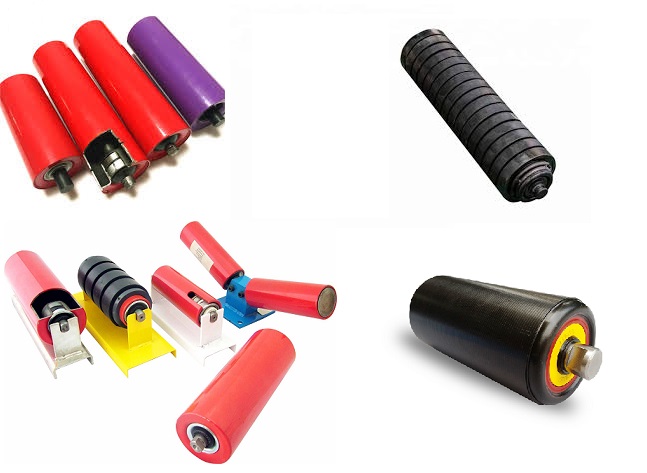Introduction and Application of Roller
In industries and especially production lines, conveyor belts are one of the most important equipment that can have various applications using a dedicated conveyor belt. Rollers are considered one of the main components in any conveyor belt system. Rollers are also highly functional idlers in a transfer system.
Overall, this device is one of the most widely used elements for transferring products in various industries. Of course, the role of this equipment in mines is also very significant. Adhering to the standard and quality factors, especially reducing friction between different surfaces, are among the important advantages of choosing rollers for use in production lines.
What is a Roller and What is its Application?
Rollers vary in size and diameter depending on the need, and the type of conveyor belt and the product being produced determine their size. After the conveyor belt machine is activated, the rollers, by rolling on the conveyor body, cause the belt to move. The conveyor belt machine depends on the roller to continue its operation, and without it, it will have no application or functionality.
The factors that enable rollers to perform well even in the worst conditions are quality, sealing, use of special bearings, and pipes with the correct thickness. ISO, DIN, GIS, and CEMA standards have been defined for rollers. Based on these standards, rollers can be produced with the desired quality and for various applications.
Types of Rollers
Rollers are designed and manufactured in various types in the industry. The reason for the diversity of this device is the diversity in the type of conveyor belts in which the roller is used. The following are the most important types of rollers available in the industry:
MDR Roller
This type of roller has an electric motor inside and is located in cylindrical shapes (cylinders). The MDR roller has good control over its movement and offers the highest efficiency among the rollers.
Drive Roller
This type of roller enables the transfer of resources at high speed and with minimum energy consumption. This is the most notable feature of this type of roller.
Impact Rollers
Impact rollers are designed to absorb shock easily. The covering of these rollers is in the form of plastic rings that prevent damage to the core and the roller itself. This roller is generally used in places where the product is transferred in the form of a drop on the conveyor belt.
Troughing Roller
This roller is installed in a bent and broken shape under the conveyor belt. This design prevents the product from falling on the conveyor belt.
Metal Roller
These types of rollers are made of metal. However, depending on the application, it can be made of plain iron, aluminum, or steel.
Polymer Roller
Polymer rollers are made of materials such as polyurethane or Teflon and are about fifty percent lighter than conventional rollers. The low weight of this model of the roller reduces energy consumption. Other features of this roller are low wear and corrosion surface.
Pressed or Plain Roller
This type of roller is one of the oldest and most widely used rollers in the industry. Pressed rollers are made of materials such as galvanized, iron, and steel depending on their application.
Features and Specifications of a Roller
As mentioned, the roller is selected according to the need. However, all rollers have a number of technical specifications in common. The number of rollers and the angle of each of them depend on the cross-section, the type of transferred load, and the material capacity. These features include:
- Use based on weight and type of load
- Roller dimensions and maximum load capacity
- Desired transfer speed
- Ambient temperature tolerance
- Exposure to adverse conditions
- Low erosion rate
- Pipe thickness
- Type and material of the pipe
- Roller tube appearance
- Manufactured according to standards
Roller Applications
The main role of this product is in the production of conveyor belt systems. Also, due to the different types of conveyor belts, rollers have different types. The presence of a roller under the conveyor belt supports the weight of the belt and prevents it from sagging. The following are the most common applications of rollers in the industry:
- Aerospace Industry
- Agricultural Equipment
- Electrical and Electronic Industries
- Food Industries
- Medical and Pharmaceutical Equipment
- Labeling
- Transportation and Mining

